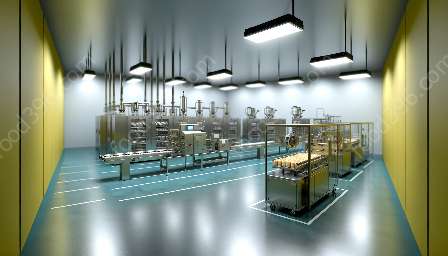Sustainability in packaging is a critical consideration in today's world, with increasing focus on reducing environmental impact, enhancing food preservation and processing, and embracing innovative packaging technologies. This article will explore sustainable packaging solutions and their compatibility with packaging technologies and food preservation & processing, highlighting the latest trends, innovations, and applications.
1. Key Challenges in Packaging
The packaging industry faces several challenges, including environmental concerns, food waste, and the need for efficient preservation and processing. Sustainable packaging solutions aim to address these challenges by providing eco-friendly, efficient, and cost-effective alternatives.
1.1 Environmental Impact
Traditional packaging materials often contribute to environmental pollution and waste. Sustainable packaging solutions focus on using renewable, biodegradable, and recyclable materials to minimize the environmental footprint.
1.2 Food Waste Reduction
Inadequate packaging can lead to food spoilage and waste. Sustainable packaging technologies and designs play a crucial role in extending the shelf life of food products, reducing food waste, and ensuring product safety.
2. Sustainable Packaging Innovations
In recent years, the packaging industry has witnessed a surge in innovative sustainable solutions. These include:
- Biodegradable Packaging Materials: Utilizing biopolymers, plant-based plastics, and compostable materials to create environmentally-friendly packaging options.
- Recyclable Packaging: Designing packaging that can be easily recycled and reused to minimize waste and promote a circular economy.
- Active and Intelligent Packaging: Incorporating technologies to monitor and preserve food quality, freshness, and safety throughout the supply chain.
- Minimalistic Packaging: Reducing packaging material and optimizing design to minimize environmental impact and enhance efficiency.
3. Compatibility with Packaging Technologies
Sustainable packaging solutions are compatible with a wide range of packaging technologies, including:
- Modified Atmosphere Packaging (MAP): Utilizing sustainable gases and barrier materials to create an optimized atmosphere for food products, extending shelf life and reducing spoilage.
- Vacuum Packaging: Using sustainable films and materials to create airtight packaging, preserving food freshness and quality.
- Intelligent Packaging Systems: Integrating sustainable sensors and indicators to monitor and maintain product condition, ensuring better food preservation.
- Nanotechnology in Packaging: Leveraging sustainable nanomaterials to enhance packaging properties such as barrier performance, antimicrobial function, and mechanical strength.
4. Food Preservation & Processing
Sustainable packaging solutions contribute significantly to the field of food preservation and processing by:
- Extending Shelf Life: Providing protective and sustainable packaging to enhance the shelf life of perishable food items, reducing food waste and improving economic efficiency.
- Maintaining Quality: Ensuring that sustainable packaging materials and technologies maintain the sensory attributes, nutritional value, and safety of food products throughout storage and transportation.
- Reducing Contamination: Implementing sustainable packaging solutions to minimize contamination risks and enhance food safety, addressing critical concerns in food processing and distribution.
5. Conclusion
Sustainable packaging solutions have revolutionized the packaging industry, offering eco-friendly options that are compatible with advanced packaging technologies and crucial for food preservation and processing. By embracing innovation and sustainability, the industry can address environmental challenges, reduce food waste, and ensure the safety and quality of packaged products.

